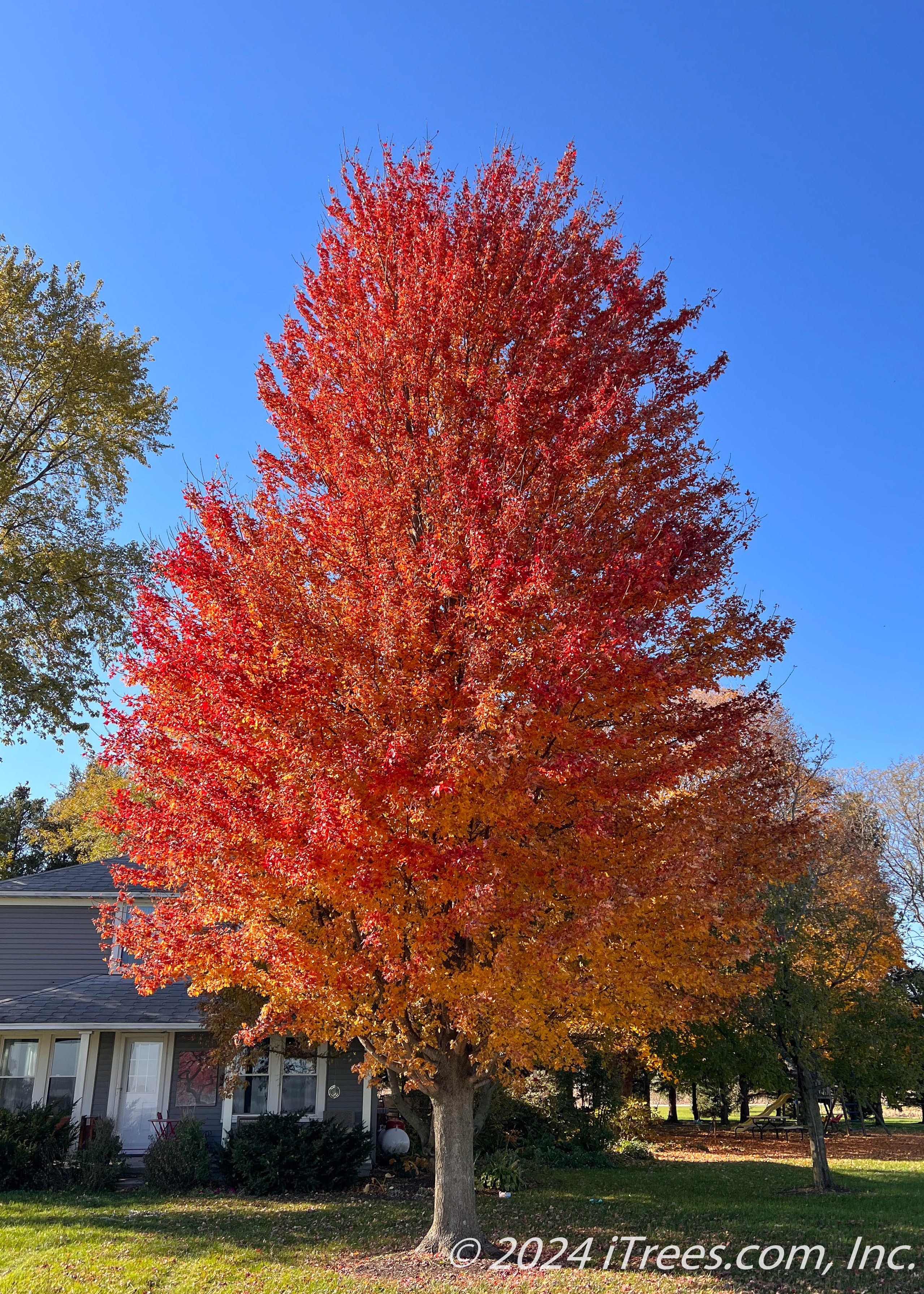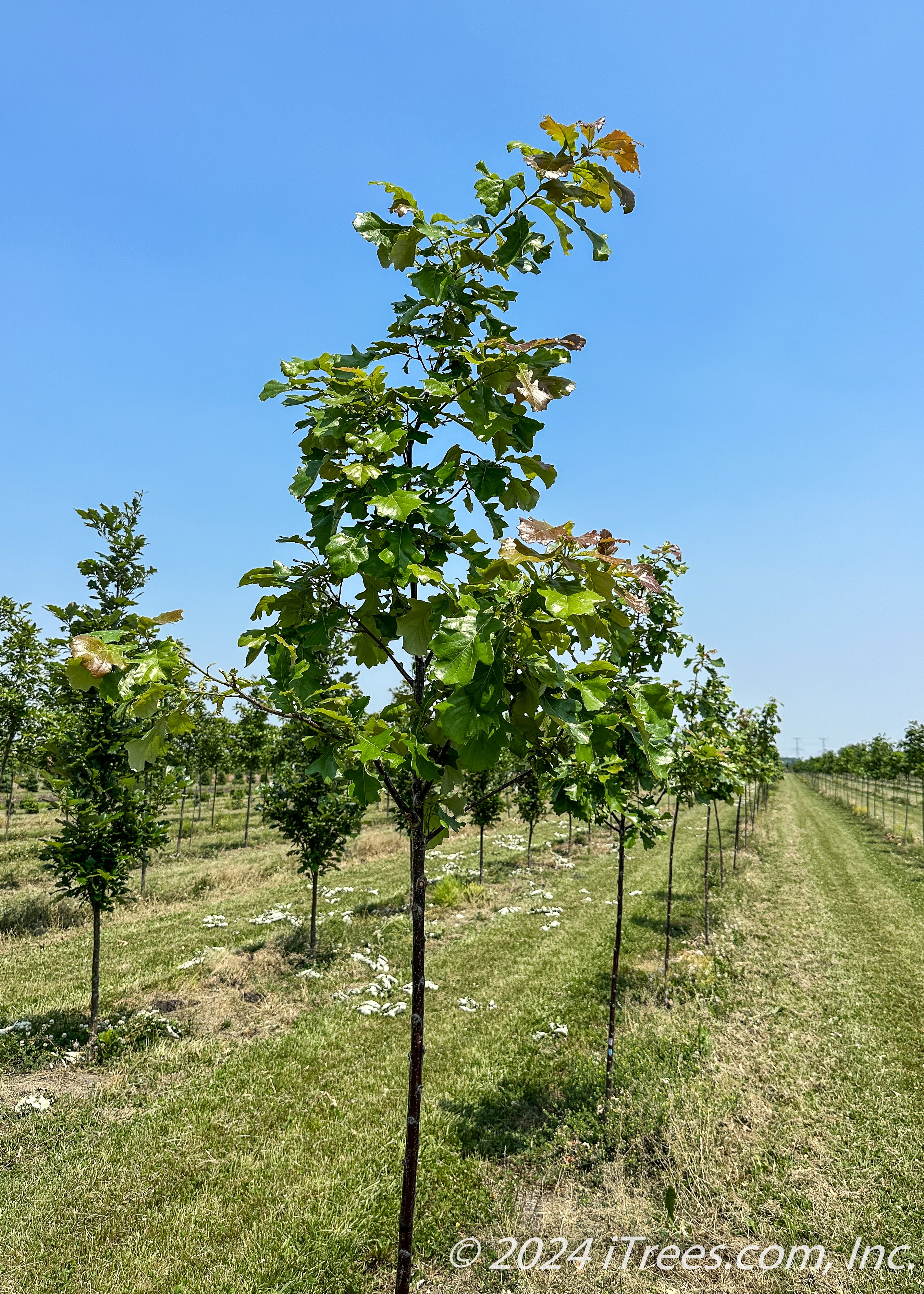
Hurray! Your new tree is in the ground! Now all you need to do is care for it.
Here, you'll find answers to your pressing questions about watering, staking, fertilizing, and more. We've included some quick how-to videos that will help make caring for your new tree simple.
We've set you up for success with our easy-to-follow tree care instructions.
Please take a moment to read through our tree care tips below. Your new tree will thank you.
Tree care is an easily manageable process. The most crucial part of tree care is watering. Newly planted trees require routine and thorough watering regularly for at least 2 to 3 years after planting.
· Watering Your Tree
Be sure to water your tree immediately after planting. Place your hose at the base of your tree's trunk. Turn the hose on a very slow trickle. Let the hose run for 1 hr. Repeat weekly.
Consistent tree watering with a newly planted tree for the first few growing seasons will ensure a healthy, long-living tree. The growing season in Chicagoland is usually mid-April to the end of November (yes, you will still need to water your tree throughout fall).
Please note it is crucial to NOT over-water your tree. Stick to once a week, and your tree should flourish. If you need more clarification about when to water, dig down at the drip line of your tree about 6 inches from the surface and check for moisture. The soil should be wet enough to form a ball but not dry and crumbly to where it falls apart. If your tree's soil is over-saturated, it will run through your fingers. If the soil is dry, it means it needs water. If the tree's soil is runny, your tree is over-watered, and you should let up on tree watering for the week.
Recommended Watering Devices:
Tree Watering Donuts or a quality hose is best. Watering donuts only take 5 mins to fill and slowly release the water over 5-7 days. Refill the watering donut 1x per week. If it's rained 1" or more in a week, you can let up and resume the following week. Quality hoses last the longest and will hold up when left outside. You can use a traditional garden hose. Or, use a soaker ring or a soaker hose.
Note: We DO NOT recommend using a lawn irrigation system to water your tree. Often irrigation systems result in continuously saturated soil and may cause severe root damage and tree death.
Learn the proper way to water your tree here →
Recap → Water your tree 1x each week, for 1 hr in the absence of 1" of rain or more.
Your newly planted tree should have been mulched, with natural brown shredded wood chips, on the day of its planting by our iTrees.com crew.
· Mulching Your Tree
Mulch will conserve moisture, help prevent unwanted grass and weeds that compete with tree roots, stabilize soil temperature, add organic matter to improve soil, and protect tree trunks from mowers and weed whips. Replace your tree's mulch every two years to maintain a three-inch thick layer, expanding the mulch ring as the tree grows.
Pro Tip → When replacing mulch, please expose the tree's root flare. Avoid placing mulch up the trunk of the tree.
Learn the proper way to mulch your tree here →
· Wrapping Your Tree for Winter
It is beneficial to wrap the trunk of your tree in late fall (November), being sure to remove it the following spring (April). Tree wrapping in the winter can help protect the tree from frost-crack, sunscald, and animal damage. Tree wrap should be wrapped around the tree trunk, starting at the ground and overlapping to the lowest branch. We recommend using DeWitt Tree Wrap, or any protective wrapping material, for all newly planted single-trunk trees up to 3 years.
Learn the proper way to wrap your tree here →
· Staking Your Tree is Not Required
We do not recommend staking newly planted ball and burlap trees over a 1.5-inch caliper. Young trees standing alone with their tops free to move will develop a stronger and more resilient trunk than a tightly staked tree.
· Fertilization
Fertilizing your newly planted tree is not recommended within one year of being planted. It is best to consult an arborist about recommended fertilization programs for the years following its planting. Be sure to keep up with the health of your tree. It is crucial for the longevity of its life. There are many fertilization products available— please be sure to read all instructions carefully before applying. Always use slow-release fertilizers when applicable.
· Avoid the Temptation of Severely Pruning Newly Planted Trees
One of the benefits of purchasing a large tree is the nursery has already taken care of any crucial pruning before we plant your tree. As your tree grows, you may need to remove the lower limbs if they cause obstruction. Dieback or dead branches are common in newly planted trees due to transplant shock and stress— prune out dead branches, and the tree will replace them given time.
Now, sit back and enjoy!
We want your tree to thrive, flourish, and add beauty to your home. We know you do too.
Stick to our easy-to-follow instructions, and you'll be guaranteed to spend less time worrying and more time enjoying what's important— your new tree!



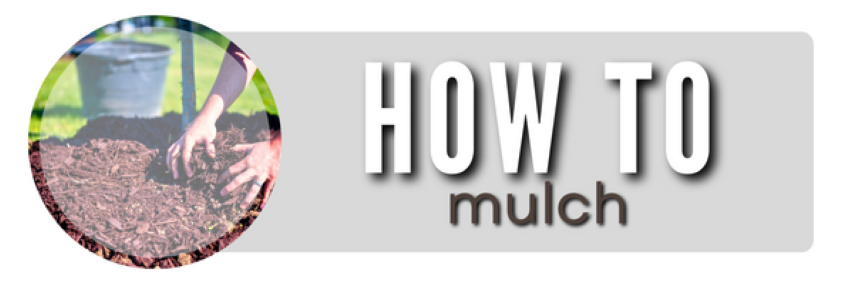

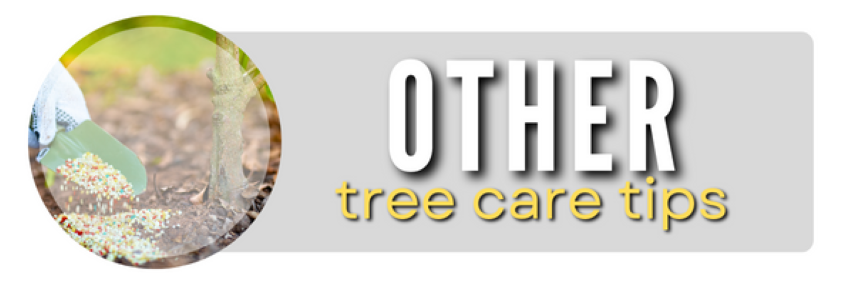



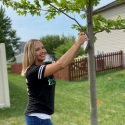

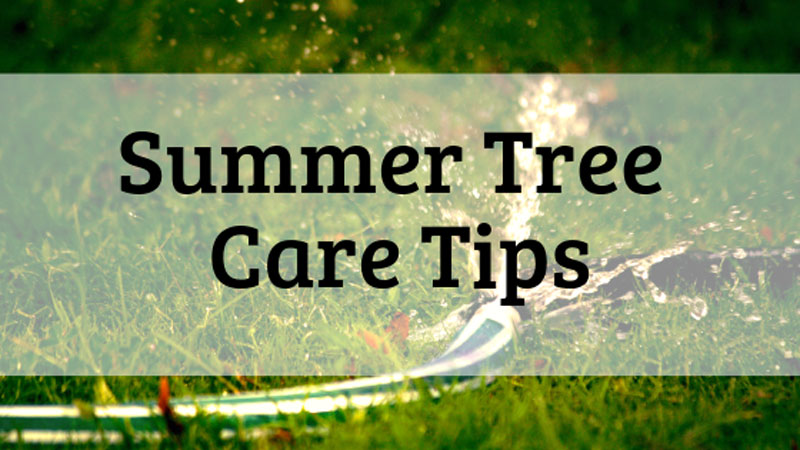
.png)

